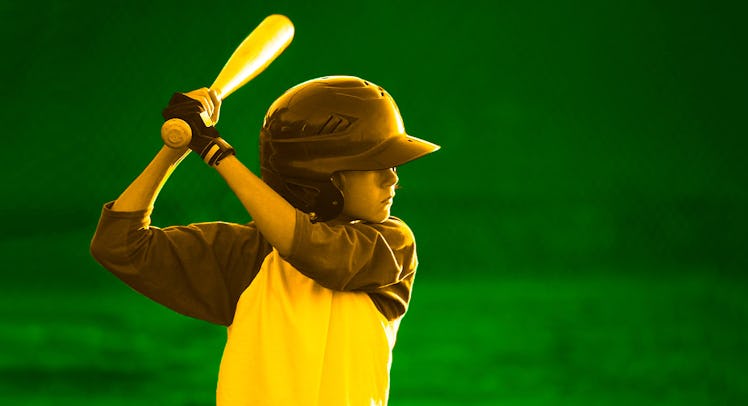The Best Hitting Drills for Young Baseball Players
Two top Little League coaches share their favorite drills to teach and build hitting fundamentals.

For most baseball players, batting is the best part of practice. What’s more fun than stepping up to the plate and whacking changeups around the field without ever getting called out? Even better, to get good at batting you have to get your cuts in. The more pitches a player sees, the stronger hitter they become. Which means more fun.
But straight batting practice is only one of many ways Little League coaches can develop a young player who’s just learning to hit. For other practice ideas, Fatherly asked AJ Arroyo, a hitting coach at The Baseball Center in New York City, and Mike Randazzo, coach of the Fairfield (Connecticut) American Little League All-Stars, for their favorite drills to teach and build hitting fundamentals.
Hit Off a Tee
While a tee may seem juvenile says Arroyo, it’s a fundamental tool for getting batters to improve their swing. For younger hitters, tee work is important to help flatten out a swing and make solid contact with the ball. Think of it like golf, Arroyo says, it’s all about hitting the ball cleanly without knocking over the tee. And for more experienced hitters, a tee can be used to hold the ball steady so batters can break down every tiny part of their swing with a static target. To practice, put the tee on home plate and have batters step into the box. With their feet together, they should stride toward the ball and swing, making sure to keep pressure on their back foot to provide a solid platform for the hit.
Spot Hitting
To work on a batter’s timing, Arroyo says he often puts a star or a dot on the field (you can use a cup lid, a divot, or anything to make a mark) right in front of home plate. Then, pitch or toss to the batter, but tell them to hit the ball before it passes the mark. This will make sure they’re hitting out in front of the plate and getting the best possible swing on the ball, rather than waiting for it or getting jammed up. Obviously, if they crank everything into the third-base dugout, move the mark closer to the plate.
Two-Ball Tricks
This drill requires two different colored Wiffle balls (or a can of spray paint) but is a ton of fun, says Arroyo. With the batter at the plate, stand on the opposite side and toss both balls to them at the same time. As you release them, yell which color ball you want the player to hit. “This is teaching them ball vision,” Arroyo says, “and to focus in on the target they’re going to hit.” Both are good skills, adds Arroyo, for hitting breaking pitches or any kind of junk with movement.
Opposite Field Drills
Finally, Mike Randazzo says he focuses on teaching his Little League players to consistently drive the ball to the opposite field — right field for righties, left field for lefties. And to work on that, he has a specific drill. You need at least half a diamond of players — so for a right-handed batter, make sure there’s a first and second baseman, center fielder, and a right fielder. The batter steps to the plate and gets to hit as long as they can — provided everything they smack goes right of center. If they pull the ball at all, they’re out, and the next hitter steps up. You can do this with live pitching, but Randazzo says it’s usually best to do front toss or side-toss pitching so the batters can focus on placement without worrying about just making contact.
This article was originally published on